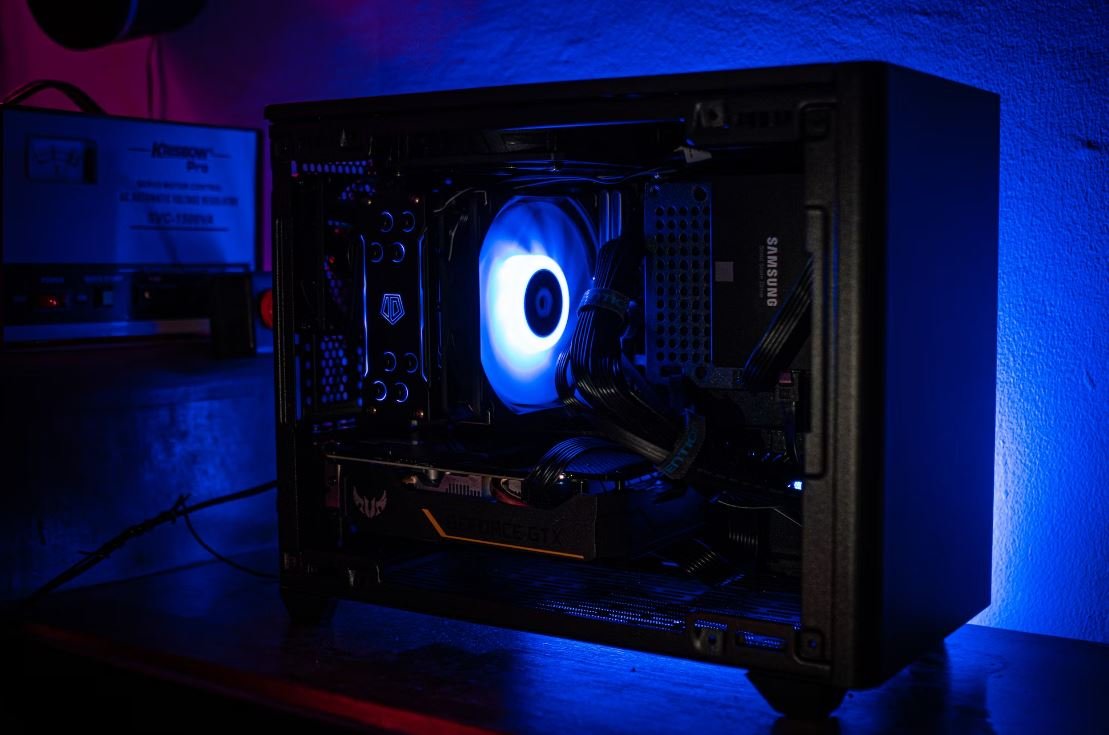How Will Neuralink Work?
Neuralink is a neurotechnology company founded by Elon Musk in 2016. Its goal is to develop implantable brain-machine interfaces (BMIs) that can enhance human capabilities. This article will explore the fascinating technology behind Neuralink and how it aims to revolutionize the field of brain-computer interfaces.
Key Takeaways:
- Neuralink is developing implantable brain-machine interfaces (BMIs).
- The technology aims to enhance human capabilities.
- Neuralink’s ultimate goal is to enable symbiosis between humans and artificial intelligence.
Understanding Neuralink
Neuralink’s technology involves implanting tiny electrodes, or “threads,” into the brain. These threads are thinner than a human hair and can penetrate the brain’s surface without causing significant damage. With the help of robotic insertion, the threads are carefully placed into specific regions to collect and transmit data.
*Neuralink’s threads are capable of collecting and transmitting vast amounts of neural data.
The Brain-Machine Interface
Once inserted, the threads establish a connection between individual neurons and the external processing unit. This external unit, called the “Link,” is a small chip placed behind the ear. It processes the neural signals and sends them wirelessly to an external device such as a smartphone or computer.
*The Link chip acts as a bridge between the brain and external devices.
Applications of Neuralink
Neuralink’s technology holds immense potential for a wide range of applications, including medical treatments, communication, and even improving cognitive abilities. Here are some potential use cases:
- Restoring sensory functions in individuals with disabilities.
- Enhancing memory and learning capabilities.
- Enabling direct communication between individuals’ brains.
- Controlling electronic devices with thoughts.
*Neuralink could potentially revolutionize the way we interact with the world and with each other.
Challenges and Ethical Considerations
While the technology proposed by Neuralink is groundbreaking, there are several challenges and ethical considerations that need to be addressed. These include:
- Ensuring the safety and reliability of the implanted devices.
- Addressing potential privacy concerns associated with the collection and storage of neural data.
- Ensuring equitable access to the technology to avoid exacerbating societal inequalities.
*The ethical implications of merging humans with artificial intelligence raise complex questions.
Neuralink’s Progress and Future
Neuralink has made significant strides in its research and development efforts. The company has conducted successful experiments on animals and recently showcased its progress by demonstrating a fully functioning Neuralink device implanted in a pig. These achievements give hope that the technology may soon be available for human trials.
*Neuralink’s progress opens up exciting possibilities for the future of brain-computer interfaces.
| Comparison of Neurotechnology Companies | Neuralink | Other Company 1 | Other Company 2 |
|---|---|---|---|
| Founding Year | 2016 | XXXX | XXXX |
| Application Focus | Enhancing human capabilities | XXXX | XXXX |
| Recent Achievements | Successful animal experiments, device implanted in a pig | XXXX | XXXX |
Timeline of Neuralink’s Development
- 2016: Neuralink is founded by Elon Musk.
- 2017: The company reveals plans for developing implantable brain-machine interfaces.
- 2020: Neuralink showcases a functioning device implanted in a pig.
| Benefits of Neuralink | Description |
|---|---|
| Enhanced cognitive abilities | Neuralink may enable individuals to expand their mental capacity and memory. |
| Potential medical breakthroughs | Neuralink could offer novel treatment options for neurological disorders. |
| Advancement in human-computer interaction | Direct communication and control of devices using only thoughts. |
The Exciting Future Ahead
As Neuralink continues to progress, the future of brain-machine interfaces appears promising. The technology has the potential to revolutionize healthcare, communication, and human augmentation. While many challenges lie ahead, the possibilities are truly remarkable.
*The integration of human minds and artificial intelligence holds the potential for unexpected advancements and discoveries.

Common Misconceptions
Misconception 1: Neuralink will turn humans into superhumans overnight
One common misconception about Neuralink is that it will instantly transform individuals into superhumans with enhanced cognitive abilities. However, this is not the case. While Neuralink aims to enhance brain function through its brain-computer interface (BCI) technology, it is still in its early stages of development. It is important to understand that the technology of Neuralink is not a magical remedy that will instantly give users superpowers.
- Neuralink is designed to be a tool that complements human capabilities, rather than replace them entirely.
- Enhancements in brain function through Neuralink may require extensive training and practice to exploit its full potential.
- The long-term effects of using Neuralink on human health and mental well-being are not yet fully understood.
Misconception 2: Neuralink will allow people to read minds
Another common misconception is that Neuralink will enable individuals to read each other’s thoughts. While Neuralink’s BCI technology has the potential to decode certain brain signals and translate them into actions or commands, the idea of mind-reading is far-fetched. Neuralink primarily focuses on facilitating human-machine interaction and enhancing communication between the brain and external devices.
- Neuralink’s technology is centered around decoding specific brain signals related to motor functions, not thoughts or emotions.
- The technology is designed to allow individuals to control devices using their thoughts, rather than reading the minds of other people.
- Ensuring privacy and protection of personal information is a crucial concern when it comes to the development of Neuralink technology.
Misconception 3: Neuralink can only benefit those with disabilities
Some people mistakenly believe that Neuralink is solely intended for individuals with disabilities or medical conditions. While it is true that BCI technology can have significant potential in improving the lives of people with disabilities, Neuralink’s ultimate goal is to benefit a wide range of individuals, including those without any impairments.
- Neuralink can enhance cognitive abilities, memory, and concentration in healthy individuals, unlocking new possibilities in various fields.
- Applications of Neuralink may extend beyond medical use to areas like education, entertainment, and communication.
- By creating an efficient neural interface, Neuralink aims to revolutionize human-machine interactions for everyone, not just those with disabilities.
Misconception 4: Neuralink is a fully matured technology ready for widespread use
Some individuals assume that Neuralink is already a fully developed technology ready for immediate use by the general public. However, this is a misconception. Neuralink is still in its early stages of development, with ongoing research and improvement required before it can be widely accessible.
- Neuralink is currently being tested and developed through clinical trials that involve a select group of individuals.
- Long-term safety, effectiveness, and regulatory approval processes are still necessary steps to ensure its widespread use.
- It may take several years, or even decades, before Neuralink is widely available to the general population.
Misconception 5: Neuralink’s only purpose is to merge humans with artificial intelligence
One common misconception surrounding Neuralink is that its primary objective is to merge humans with artificial intelligence (AI). While Neuralink may have the potential to facilitate better integration and interaction with AI systems, its fundamental purpose is not to merge humans with AI, but to enhance human capabilities through more efficient brain-machine interfaces.
- Neuralink can improve communication between humans and AI systems, but it does not entail full integration of AI into the human brain.
- The primary focus of Neuralink is to develop safer, faster, and more intuitive interfaces between the brain and external devices.
- Enhancing human cognition and abilities through direct brain interfaces is a goal separate from general AI development.

How Will Neuralink Work?
Neuralink is a revolutionary company founded by Elon Musk, aiming to develop implantable brain-machine interfaces to enhance human cognition and communication. This article delves into the intricate details of Neuralink’s technology, exploring the potential uses and benefits it may bring to humanity. Ten tables have been compiled to illustrate different aspects of Neuralink’s work, providing fascinating insights into the future of brain-computer interfaces.
Harnessing the Power of Neuralink
Neuralink’s technology holds the promise of enabling humans to effortlessly interface with machines and augment our cognitive abilities. Here, we examine the key factors contributing to Neuralink’s potential for revolutionizing the field of brain-machine interfaces.
Table of Neurons Impacted by Neuralink
Neuralink’s implantable devices directly interface with neurons within the brain, allowing for bidirectional communication. This table identifies the different types of neurons targeted by Neuralink’s technology, along with the potential benefits associated with each.
Neuralink Implantation Techniques
Neuralink employs various implantation techniques to seamlessly integrate its devices with the brain. This table provides an overview of the different methods utilized by Neuralink to achieve successful implantation, along with their associated advantages and challenges.
Neuralink’s Brain-Machine Interface Components
A successful brain-machine interface relies on the interplay of various components. This table highlights the essential elements of Neuralink’s interface system, including electrodes, amplifiers, and data processing units. Each component’s purpose and specifications are detailed.
Applications of Neuralink’s Technology
Neuralink’s technology opens up a multitude of possibilities for enhancing human capabilities. This table explores the potential applications of Neuralink’s brain-machine interfaces, ranging from medical and therapeutic uses to mind-controlled consumer devices.
Neuralink’s Neural Data Bandwidth
One crucial aspect of brain-machine interfaces is data bandwidth—the speed at which information can be transmitted between the brain and external devices. This table provides an overview of Neuralink’s anticipated data transmission rates, enabling faster and more efficient communication between humans and machines.
Comparing Neuralink to Other Brain-Machine Interfaces
Several other companies and research institutions are also developing brain-machine interfaces. This table compares Neuralink’s technology to some prominent competitors in terms of performance, scalability, and potential future developments.
Neuralink’s Safety and Ethical Considerations
As with any emerging technology, safety and ethical concerns surround Neuralink’s brain-machine interfaces. This table outlines the primary considerations associated with Neuralink’s technology, including data privacy, potential risks, and regulatory implications.
Neuralink’s Human Trials and Success Rates
Before Neuralink’s technology can be widely adopted, extensive human trials are necessary. This table presents the success rates and notable outcomes of Neuralink’s clinical trials, shedding light on the progress made and addressing any concerns related to the technology’s viability and effectiveness.
Neuralink’s Impact on Human Evolution
Neuralink has the potential to reshape human evolution by merging our biology with advanced technology. This table explores the long-term implications and transformative effects Neuralink‘s brain-machine interfaces might have on human society and the future of the human species.
Conclusion
Neuralink’s innovative brain-machine interface technology heralds a future where humans seamlessly interact and integrate with machines. Through the ten tables presented in this article, a comprehensive understanding of Neuralink’s work has been achieved. As this technology rapidly progresses, it holds tremendous promise for transforming healthcare, communication, and our conception of human potential. It is only a matter of time before Neuralink reshapes the world as we know it.
Frequently Asked Questions
How will Neuralink interact with the brain?
Neuralink’s technology will involve implanting tiny, flexible threads of electrodes into the brain. These threads will communicate directly with neurons, allowing the exchange of information between the brain and external devices.
What is the purpose of Neuralink?
The purpose of Neuralink is to develop a brain-machine interface that can enhance human cognition and provide potential solutions to neurological disorders.
How does Neuralink plan to improve brain-machine interfaces?
Neuralink aims to improve brain-machine interfaces by utilizing advanced materials, creating a minimally invasive implantation process, and developing sophisticated algorithms to interpret and decode neural signals.
What potential applications does Neuralink envision?
Neuralink envisions a wide range of applications, such as restoring mobility to individuals with paralysis, allowing individuals to control digital devices with their thoughts, and even facilitating communication between humans and artificial intelligence.
Will Neuralink be safe?
Neuralink is committed to prioritizing safety in their technology. They will extensively test their implants and ensure rigorous quality control measures to minimize risks associated with surgical interventions into the brain.
What are the challenges in developing Neuralink’s technology?
Developing Neuralink’s technology involves overcoming challenges such as ensuring long-term biocompatibility of implanted devices, accurately interpreting complex neural signals, and integrating the technology seamlessly with the brain’s natural processes.
How does Neuralink address privacy concerns?
Neuralink acknowledges the importance of privacy and intends to maintain the highest standards of data security and protection. They aim to strictly adhere to legal and ethical guidelines governing the privacy of individuals’ brain data.
What notable achievements has Neuralink made so far?
While Neuralink is still in its early stages, some notable achievements include successful trials on animals, demonstrating the ability to read and write information to the brain, and developing high-density, biocompatible electrode arrays.
What is the timeline for Neuralink’s development?
Neuralink has not released an official timeline for their development, but they are continuously working to refine their technology and are conducting clinical trials to evaluate its safety and efficacy.
How can individuals get involved with Neuralink?
As of now, Neuralink does not have any programs for general public involvement. However, individuals can stay updated on Neuralink’s progress by following their official website and social media channels.




